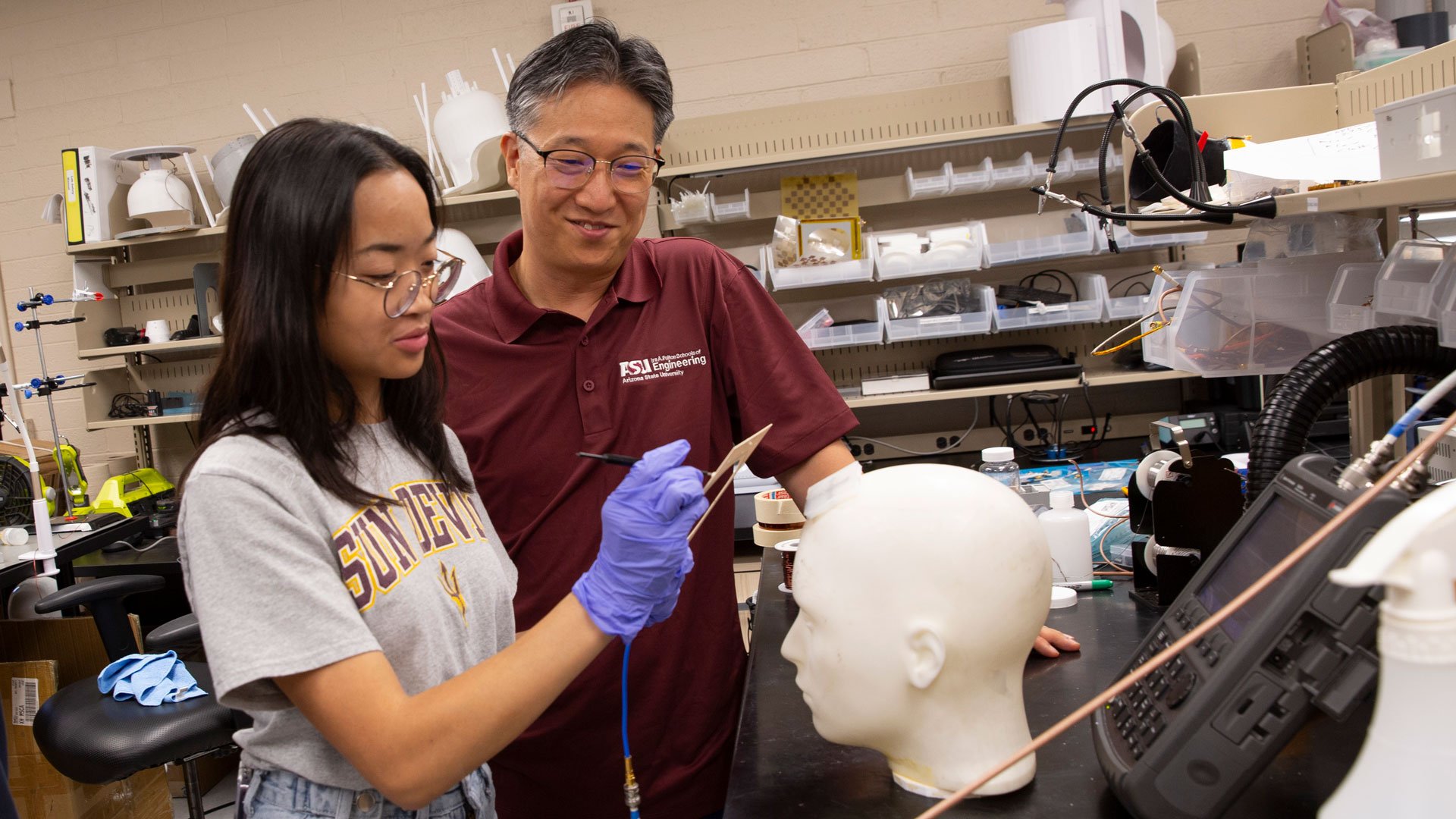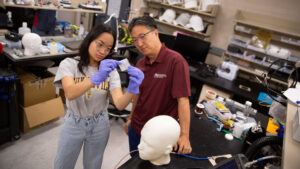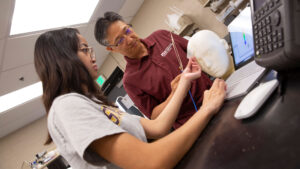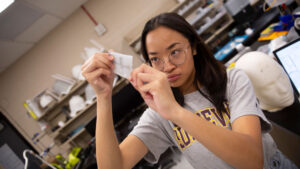Ava Claire Lariego
Biomedical engineering
Hometown: Scottsdale, Arizona, United States
Graduation date: Spring 2025
Additional details: Honors student
FURI | Fall 2023
Design of a Thin and Stretchable Metamaterial Cap to Enhance MRI Image Quality
The research team is investigating the efficacy and accuracy of the application of an artificially made, stretchable metamaterial designed with specific electromagnetic properties. The conductive metamaterial is designed to be worn by a patient inside a Magnetic Resonance Imaging (MRI) machine. Its performance will be measured by its ability to increase the magnetic field intensity and signal-to-noise ratio (SNR) of an MRI scan, indicated by higher contrast images. The imaging results will be compared to traditional MR images. This research will provide insight into creating safer, higher-quality MR images, thus supplying healthcare professionals with access to higher detailed anatomical information for better medical care.
Mentor: SungMin Sohn
Featured project | Fall 2023

Ava Claire Lariego, a biomedical engineering junior in the FURI program, is working with SungMin Sohn, an assistant professor of biomedical engineering, to design a new material that can increase what doctors can see from MRI scans. Lariego has long been interested in a career in the medical industry, like many of her family members, and us combining her interests in the medical field and robotics to pursue biomedical engineering studies.
What made you want to get involved in FURI? Why did you choose the project you’re working on?
I had never done engineering research before, and I wanted to develop my skills in literature review and experimental design outside of a class setting. I am also a biomedical engineering major with a concentration in biological devices, so all of my classes are more biology-focused. To widen my background and gain experience with biomedical devices, I joined the BiCS Lab to challenge myself and focus on a topic that was more technical compared to wet labs.
I am fascinated by the different ways technologies and processes can be improved to promote the health and safety of patients, and the MRI project I am working on addresses exactly that.
Have there been any surprises in your research?
The only circuitry-related background applicable to my research project was in my EEE 202 Circuits I course. I always see direct applications and concepts that I learned in that class; however, it was surprising to see what existed beyond a sophomore student’s curriculum and how ideas that I learned the basics about in class were actually applied in the real world in a more advanced way.
Personally, I was also surprised at how much influence simulation software has in engineering research. Many technical projects like mine spend a great deal of time being digitally simulated before actually being built or physically tested, which was a new mindset I had to adapt to.
How will your engineering research project impact the world?
This research project has a direct impact on the level of detail of information a medical professional can receive to properly detect, diagnose and treat a condition. It offers a wearable solution to safely and effectively improve the performance of a widely used diagnostic tool. Increased data collection is positively correlated with an increase in customized treatment for individual patients and cases. Health care professionals with access to more detailed diagnostic information can provide patients with better, higher quality medical care.
How do you see this experience helping with your career or advanced degree goals?
Through FURI, I am motivated to enrich my scientific knowledge, apply my academic education to real-world problems and get an early start in pursuing a research career. Not only did this experience teach me to interact with graduate and doctoral students in my field of work, but it also showed me that the research industry is much more extensive and in-depth than I could have originally guessed.
I learned how to read academic papers and apply my lecture notes to real-world applications. I learned about the processes scientists use to conduct literature review, solidify background knowledge and effectively apply the scientific method. Because of this, I can be a better experimenter and research paper writer, as my chosen career is heavily concentrated in research.
Why should other students get involved in this program?
Other students, especially those in STEM, should get involved in FURI because it is a great way to enter the world of engineering research when most undergraduate students do not receive this opportunity until they have graduated already with a bachelor’s or master’s degree. As an undergraduate student, it is known that you may not have yet learned about a certain topic, and FURI fosters a community of mentorship and teaching to help with that. It is an interactive learning process that helps you get your foot in the door for further research endeavors.


